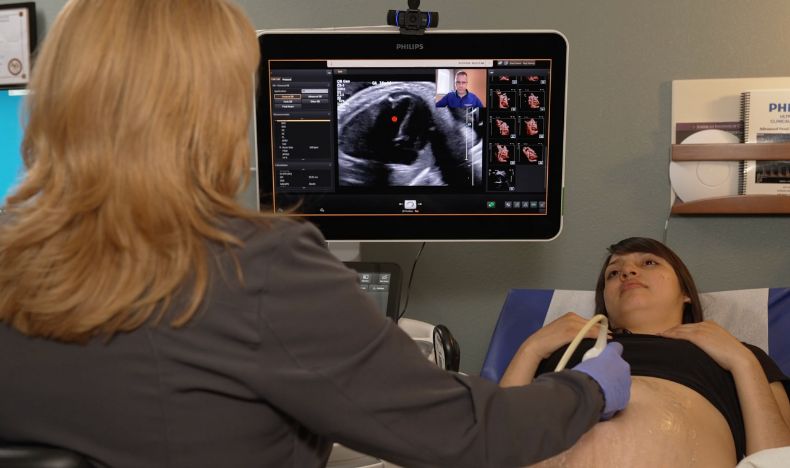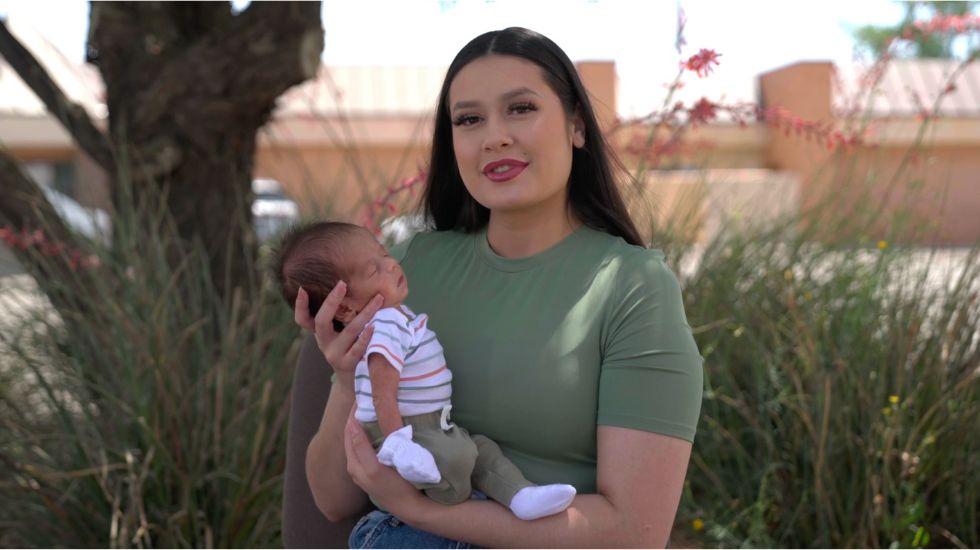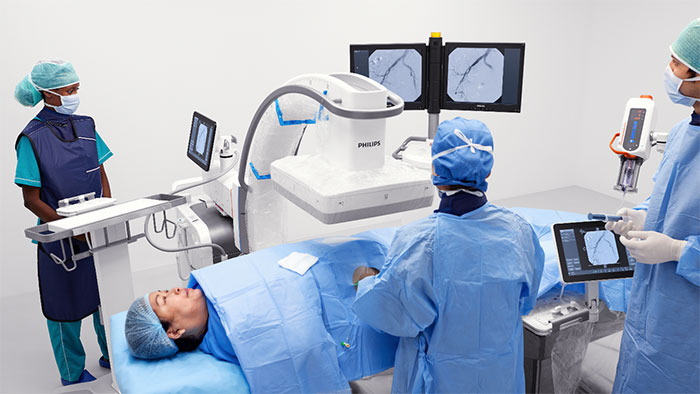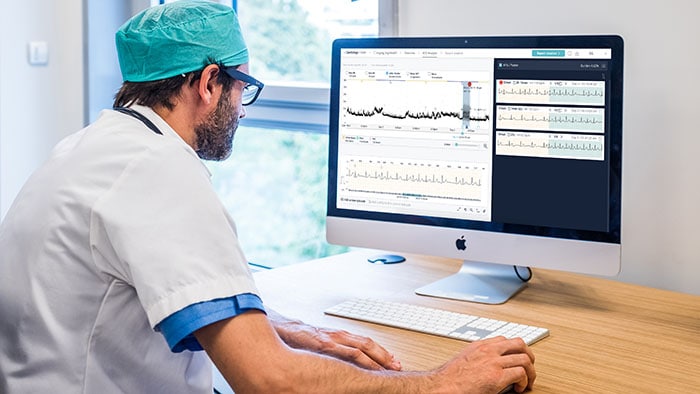The facts, by now, are impossible to ignore. According to the CDC’s latest findings, 80% of pregnancy-related deaths in the U.S. are preventable [1]. Among the contributing factors is the rising number of maternity care deserts across the United States – counties in which access to the full range of maternity health care services is limited or absent. A 2022 report by March of Dimes confirms that 5% of counties nationwide had less maternity access than two years prior, affecting up to 6.9 million women and almost 500,000 births in the U.S. [2] “Access to a unique subspecialty physician even in a major city may be limited, but for the individuals who live in smaller rural communities, each of them faces an access to care issue with essentially everything they encounter in medicine,” shares Dr. Michael S. Ruma, a maternal-fetal medicine (MFM) subspecialist at Perinatal Associates of New Mexico (PANM). As the largest MFM specialty practice in New Mexico – and one of a few such practices in the state – PANM’s services are a vital lifeline for women with high-risk pregnancies in New Mexico, which holds the second highest maternal mortality rate in the country [3].
For expectant mothers, like Dr. Ruma’s patient Yoseline, the challenges of pregnancy are magnified by the sheer distance to the nearest specialty medical facility. A mother of three young children and with a baby on the way, Yoseline resides in Ruidoso, a remote corner of New Mexico. Managing her pregnancy along with type 2 diabetes requires frequent visits with an MFM subspecialist to monitor her condition. Before tele-ultrasound was an option, Yoseline had to travel more than three hours each way to the nearest MFM care facility. “Driving to Albuquerque for care was challenging for me,” she shares, adding, “We would either wake up really early or grab a hotel the night before. I have three kids and getting them ready was a struggle.”
Marive, another patient of Dr. Ruma’s in Roswell, New Mexico was diagnosed with placenta accreta, a condition that can be life-threating for the mother. With multiple children at home, including an autistic daughter, and a husband whose job keeps him on the road, the prospect of multiple visits to an MFM nearly two hundred miles away twice a month was daunting. Marive noted, “The thought of having to drive to Albuquerque without my husband would have been stressful. To go through it alone, already having lots of emotion because of the medical diagnosis, would have also been very difficult.”
Pioneering a transformative approach

Amidst these concerns, Dr. Ruma and his team are pioneering a transformative approach to care for high-risk pregnancies. Using the latest tele-ultrasound technology, Philips EPIQ Elite ultrasound system with Collaboration Live [4], they can deliver high-quality diagnostic services to underserved areas, significantly reducing the need for high-risk patients, like Yoseline, to travel long distances for specialized care. As Dr. Ruma shares, “Prior to the pandemic, all of our genetic counseling, diabetes management and MFM care was done in person. Today, much of it is done using telemedicine and tele-ultrasound.”
With 12 locations and access to over 40 advanced ultrasound systems to provide perinatal care, PANM touches 44% of all pregnancies in New Mexico, including those that are both low- and high-risk [5]. While a highly trained sonographer conducts an ultrasound evaluation at a PANM facility near the patient’s home, Dr. Ruma can dial into the visit – frequently from hundreds of miles away - and once access is granted, he can securely talk, text, screen share and video stream between the ultrasound system and his PC or mobile device. With this real-time access, physicians can consult face-to-face with both sonographers and patients in the exam room – just as they would during an in-person visit.
This seamless process allows the specialist to discuss findings directly with the patient and the local healthcare provider, supporting early intervention and potentially preventing complications that could be life-threatening. Dr. John Dacanay, an OB-GYN with Rio Pecos Medical Associates in Roswell, where one of PANM’s satellite offices is located, shares that it has been immensely beneficial to both expecting mothers and their referring physicians. Dr. Dacanay notes that, “Having Perinatal Associates and their ultrasound capabilities has given us a great sense of relief and reassurance. It saves our patients time and gives them expertise while helping our physicians stay current with the latest recommendations.”
Better care for more people
For Dr. Ruma, groundbreaking health technology like tele-ultrasound offers the best path forward for broadening access to care in high-risk and underserved communities. He adds, “Telemedicine really cannot be underestimated. The sooner we can get that patient seen, the sooner we allay fears and address issues that may become very problematic for her pregnancy.” Learn more about tele-ultrasound here.
These sentiments are echoed in the Future Health Index (FHI) 2024 Report, an annual global survey of more than 3,000 health leaders conducted by Royal Philips, a global leader in health technology. The report reveals that 59% of health leaders see advantages to virtual care in terms of support for healthcare professionals – including increased support for complex patient management, the ability to collaborate with other healthcare professionals in different locations, and the expansion of specialist care to underserved communities [6]. Considering this finding, Jennifer Law, Maternal Health Venture Leader at Philips, notes that “The work of PANM demonstrates the vital role of technology in revolutionizing healthcare delivery, and the unwavering commitment of providers to bring quality care to New Mexico and beyond.”
By embracing telemedicine and tele-ultrasound for high-risk patients, Dr. Ruma and his team are not just overcoming geographical barriers; they are setting new standards for perinatal care in underserved areas. “In the United States, unfortunately, we have a crisis, an issue with maternal mortality,” said Dr. Ruma. “We need to do everything in our power to reduce this tragic outcome and unwelcome national statistic.”
Learn more about Philips’ commitment to support access to care here.
Telemedicine really cannot be underestimated. The sooner we can get that patient seen, the sooner we allay fears and address issues that may become very problematic for her pregnancy.
The work of PANM demonstrates the vital role of technology in revolutionizing healthcare delivery, and the unwavering commitment of providers to bring quality care to New Mexico and beyond.
Sources [1] Trost SL, Busacker A, Leonard M, et al. Pregnancy-Related Deaths: Data from Maternal Mortality Review Committees in 38 U.S. States, 2020. Centers for Disease Control and Prevention, U.S. Department of Health and Human Services; 2024 [2] Brigance, C., Lucas R., Jones, E., Davis, A., Oinuma, M., Mishkin, K. and Henderson, Z. (2022). Nowhere to Go: Maternity Care Deserts Across the U.S. (Report No. 3). March of Dimes. https://www.marchofdimes.org/research/maternity-care-deserts-report.aspx [3] Osterman MJK, Hamilton BE, Martin JA, Driscoll AK, Valenzuela CP. Births: Final data for 2021. National Vital Statistics Reports; vol 72, no 1. Hyattsville, MD: National Center for Health Statistics. 2023. DOI: https://dx.doi. org/10.15620/cdc:122047 [4] Diagnostic use requires software release 9.0 or higher [5] Data provided by Perinatal Associates of New Mexico [6] Future Health Index 2024 U.S. report *The physicians’ opinions and clinical experiences presented herein are specific to the featured physician and featured patients and are for information purposes only. The results from their experiences may not be predictive of all patients. Individual results may vary depending on a variety of patient-specific attributes and related factors. Nothing in this article/presentation is intended to provide specific medical advice or to take the place of written law or regulations.







